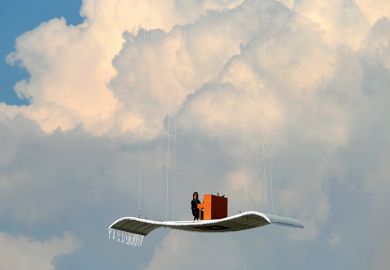The world of Celtic mythology is an intrinsically attractive one, full of duplicitous deities, bombastic warriors and supernatural beasts. For the English-speaking monoglot, however, it is also a minefield of unpronounceable names, multiple spellings and contradictory etymologies. Clearly a subject in need of a good dictionary. Into the breach has stepped James MacKillop, a former professor of English at Syracuse University, with a mission to bring order to a field more than usually prone to vagueness and misinformation.
The book appears at a time when academics are queuing up to rubbish the whole concept of Celtic culture. As a result there is now considerable scepticism over the usefulness of a term seen by many as a relic of 19th-century culture history. MacKillop largely side steps these debates, using the term "Celtic" explicitly to refer to specific languages, such as Scottish and Irish Gaelic, Manx, Welsh and Cornish, and the people who speak or spoke them. Wisely, he recognises that past speakers of Celtic languages need have had no shared sense of kinship, identity or ethnicity. To a large degree, the term is one of tradition and convenience.
Without a unified Celtic culture, there can be no single mythological tradition. Inevitably then, the material collected here represents an eclectic haul, ranging from prehistoric Gaul, through early medieval Irish literature and Arthurian legend, to the Celtic revivalism of the 18th and 19th centuries.
The 4,000 or so entries are clearly the product of long and daunting research. While many comprise brief definitions, perhaps with a few pointers to the relevant literature, others give edited highlights of the more complex myths or biographical details of the key players.
One such is Fionn mac Cumhaill, who provides a good example of how this dictionary works at its best. First we are given Fionn's ten (count them) most common names, of which Finn MacCool and Fingal are probably the most widely known. MacKillop then takes us through the possible derivation of Fionn's name, meaning fair or white, from the pre-Roman Gaulish god Vindonnus, hinting at his divine origins.
We are then led through Fionn's adventures as they appear in the early Irish literature. By now Christian scribes had demoted Fionn from god to hero, albeit one with powers of divination. Later folk tales reduced him still further, to a blustering old cuckold, until the pseudo-traditional poems of the 18th-century Ossianic cycle restored him to full glory as a noble pagan warrior.
It is in these areas, dealing primarily with the literary sources of early medieval Ireland and Wales, that this book is most assured. Elsewhere, there are problems, as with the various assays into the realm of archaeology. The great Neolithic stone setting at Calanais in Lewis, for example, is referred to somewhat puzzlingly as a "dolmen", comparable, we are told, with monuments "as far away as Japan". The first statement is simply wrong, and the second thoroughly misleading. Such a ham-fisted approach to the archaeological evidence is especially disappointing since this is an area where recent work gives exciting insights into Celtic ritual and belief.
Excavation of the Gaulish sanctuary of Ribemont-sur-Ancre, for example, revealed elaborate ossuaries that had been constructed from the long bones of humans and horses, surrounded by great heaps of iron weaponry; a striking parallel for practices reported by Caesar and others. Similarly, the ditches surrounding the Iron Age hillforts of southern England have produced a veritable menagerie of mutilated animals, as well as compelling evidence for human sacrifice. It is a great pity that none of this material has found its way into MacKillop's book.
Other omissions are even more baffling. Given its legendary associations with Merlin, and its central role in the crackpot world of born-again-Druidism, that Stonehenge escapes a mention is astonishing. This seems all the more perverse when one comes upon an entry for the henge monument at Avebury, which apparently lacks any such mythological associations.
These problems aside, this will undoubtedly be a useful work of reference for students of Celtic studies in all its various guises, and indeed for anyone else with more than a passing interest in the unwieldy world of Celtic mythology.
Moreover, effective cross-referencing of entries makes it all too easy to be drawn in. While you may set out simply to ensure that you will not embarrass yourself by mis-pronouncing the T in B" Cuailnge in company, you may well end up, some time later, pondering the dullahan, a hideous horse-riding phantom of Irish folklore whose detachable head has the texture of mouldy cheese.
Ian Armit is an inspector of ancient monuments with Historic Scotland.
Dictionary of Celtic Mythology
Author - James MacKillop
ISBN - 0 19 869157 2
Publisher - Oxford University Press
Price - £30.00
Pages - 402
Register to continue
Why register?
- Registration is free and only takes a moment
- Once registered, you can read 3 articles a month
- Sign up for our newsletter
Subscribe
Or subscribe for unlimited access to:
- Unlimited access to news, views, insights & reviews
- Digital editions
- Digital access to THE’s university and college rankings analysis
Already registered or a current subscriber? Login



